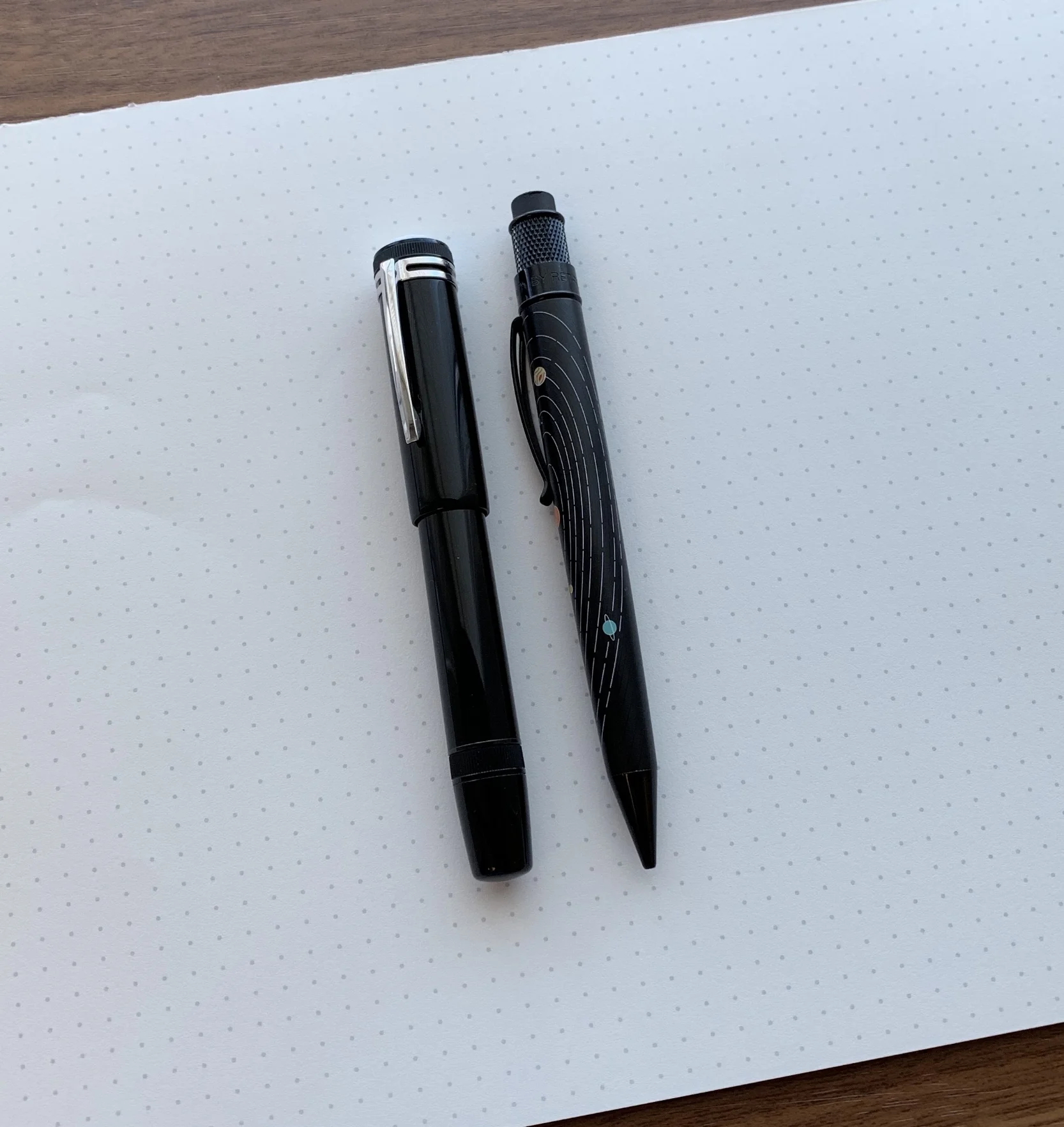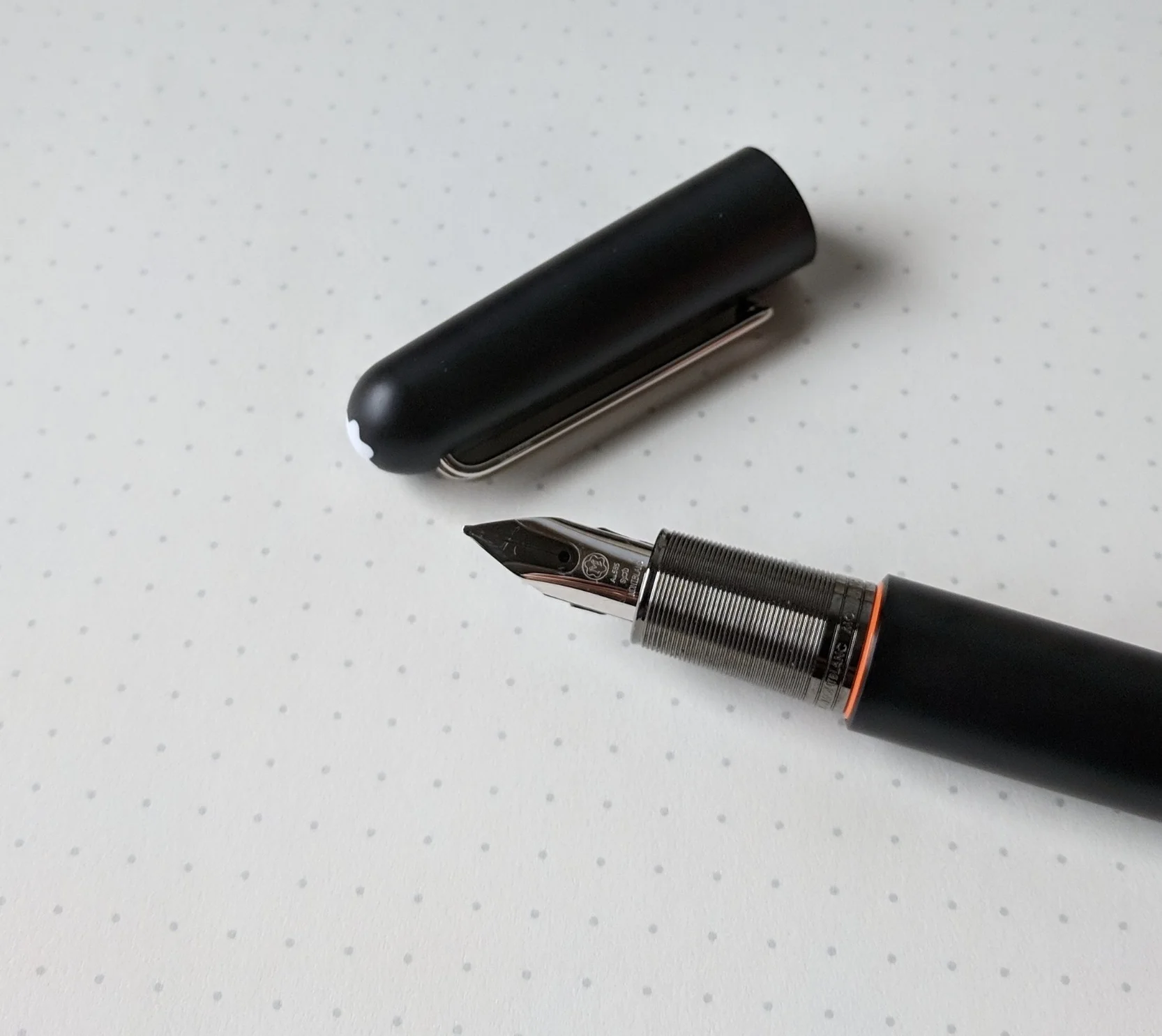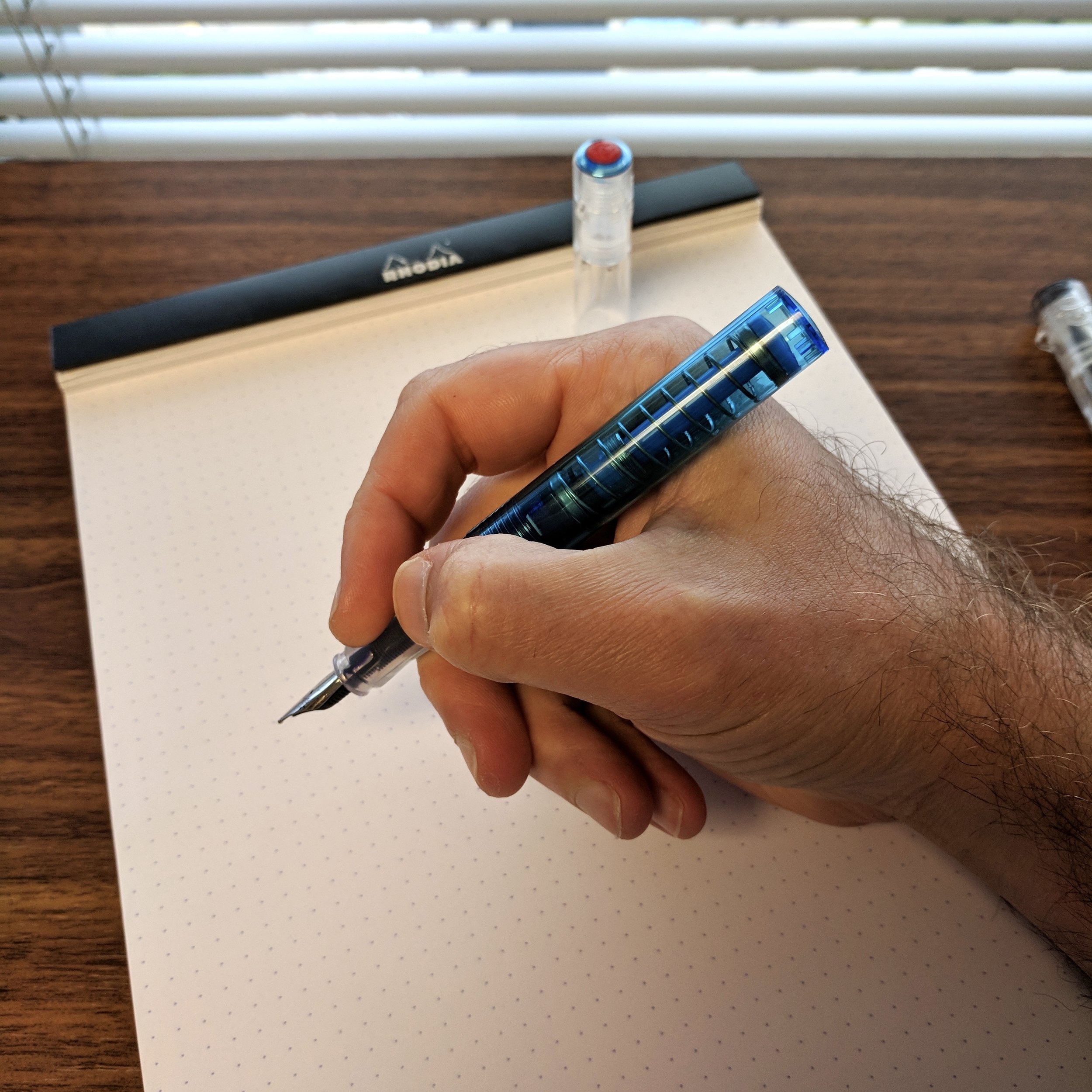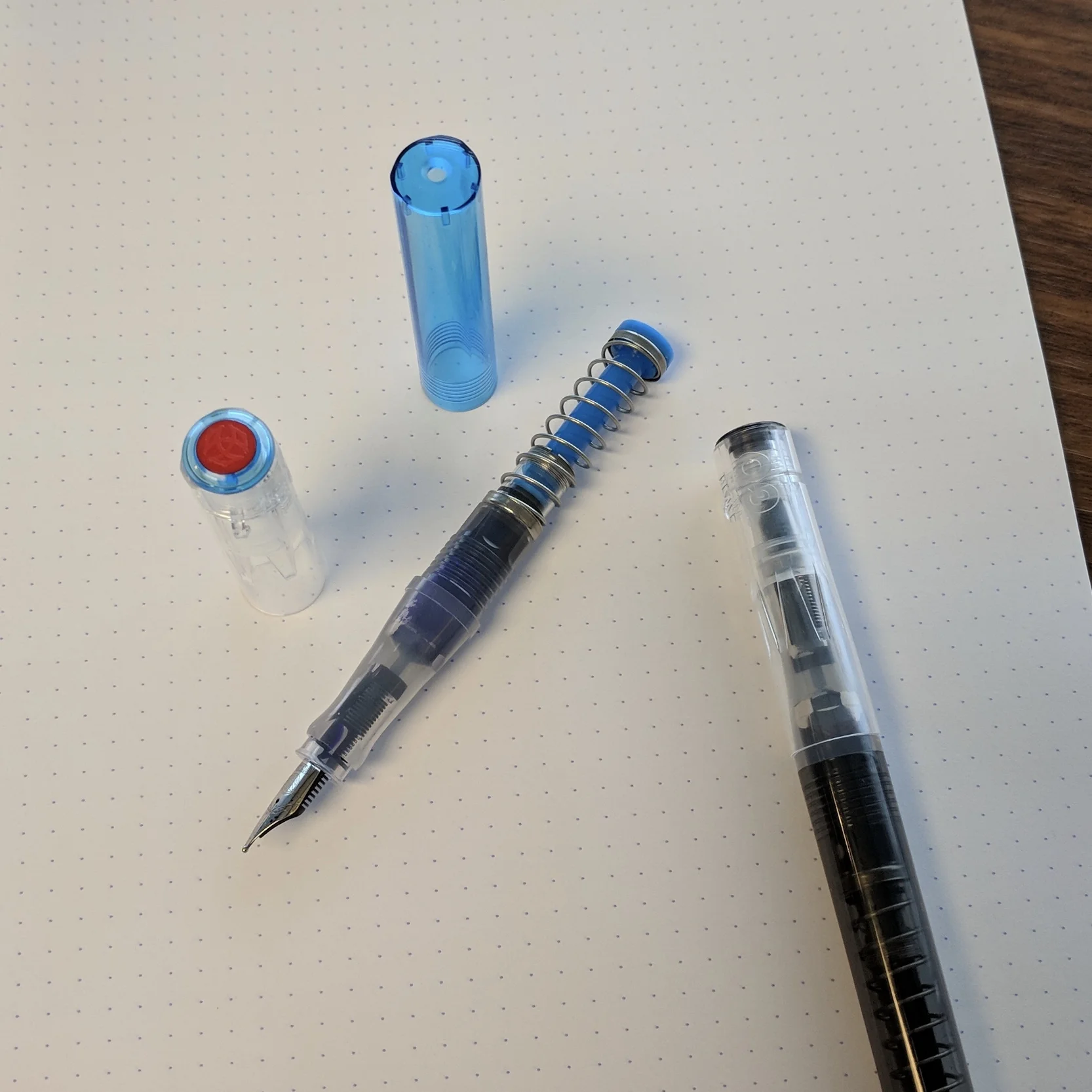The Syahi Monarch was one of a handful of pens that came home with me from the 2018 D.C. Pen Show. Prior to the D.C. Pen Show, Sanay, one of the owners of Syahi India, reached out and requested that I stop by their table and pick up a pen to review. I finally managed to make it over there on Sunday afternoon during a lull in the insanity, and selected the Syahi Monarch in Striped Ebony with a fine steel “semi-flex” nib.
The brushed brass trim and the wood grain on the ebony are both gorgeous.
The Monarch is quite large - the length of a Pelikan M800 or a Montblanc 146, but heftier. The girth comes close to a Montblanc 149. The pen does not post. The body features a black acrylic section that’s comfortable to write with - the threads are larger, not sharp, and sit higher up on the section so they don’t get in the way of your fingers. In terms of designing a larger wooden pen that’s a comfortable writer with high quality fit and finish, the company has succeeded. According to Sanay, all components are made in-house, and Syahi’s goal is to manufacture a high-quality Indian fountain pen made of wood that doesn’t feel like a “kit pen.”
Nib and Writing Experience
At the DC Pen Show, the Syahi “flex” and “semi-flex” nibs were the subject of much discussion. I chose to review what the company calls a “Fine Semiflex Steel” nib, which appears to be a Bock nib modified by extending the nib slit all the way to the base. This is a common technique used to add “flex” to steel-nib pens while keeping the price relatively low, and if done correctly, the technique is highly effective in adding line variation to your writing. The nib on my Syahi Monarch works quite well, and the nib remains smooth enough to use as a daily writer even when you’re not flexing. (Sometimes these modified steel flex nibs can feel scratchy.)
Because the steel “semi-flex” nib remains relatively stiff, you can continue to use it for standard writing.
Even though it flexes well, this nib has its drawbacks. Extending the nib slit also exposes the feed to more air, leading to issues with ink evaporation and hard starts. If you’re going to use one of these steel flex nibs, you shouldn’t leave the pen sitting for more than a day or so. I’d also recommend using a low-maintenance, free flowing ink such as Waterman Blue (or, as shown here, a 50/50 mix of Waterman Blue and Violet (“Blurple”)).
Syahi Monarch (center), compared against a Montblanc 146 (left) and a Platinum Plaisir (right).
Takeaways and Where to Buy
Wooden pens are difficult to do correctly, in the sense that they can easily turn out looking like inexpensive “kit pens” that you’d purchase from a hobby store. Syahi has plainly avoided this pitfall - nobody would confuse this with a $30 pen. From the choice of wood, to the brushed trim, to the experimentation with the nibs, the company is striving to deliver a high quality product.
Currently the easiest way to purchase a Syahi fountain pen is to order directly from the Company’s website, though based on what I learned at the D.C. Pen Show, you may start seeing these pens at retailers soon. The pen featured here - a Monarch in Striped Ebony with Brass Trim - looks like it’s unavailable at the moment, but there does appear to be a Monarch in Mexican Rose Wood with brushed brass, and if you don’t mind polished gold trim you can still purchase a striped ebony Monarch. Other models are available as well, with pricing starting at $159. If I hadn’t been able to find an ebony Monarch, I likely would have gone with the flat-top Imperator.
Many thanks to Syahi for making this review possible!
Disclaimer: I was provided with this pen free of charge, for review purposes.







